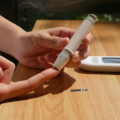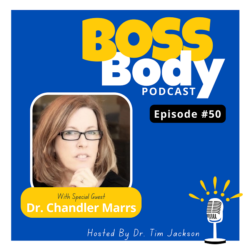My last cycle tracked with a luteinized unruptured follicle (LUF). LUF or LUF syndrome (LUFS) happens when follicles develop, but ovulation doesn’t occur even though luteinizing hormone (LH) surges. With the surge in LH, the follicle itself luteinizes and key changes in the theca and granulosa cells take place to make the follicle capable of secreting progesterone, but the ovum does not burst out of the follicle as happens during a normal ovulation. With LUF, the extent of luteinization varies and studies have found both under and overactive progesterone production during the second half of the cycle based on the degree of luteinization. LUFS happens in about 10% of menstrual cycles in fertile women.
I suspected a luteinized unruptured follicle because I had the expected rise in estradiol leading up to ovulation, but my progesterone was lower than expected for the remainder of the cycle. Recall from an earlier post, the rise in estradiol signifies the development/selection of a dominant follicle and elicits the surge in LH. Normally, after ovulation, the follicle is converted by the actions of luteinizing hormone, into the corpus luteum. The corpus luteum predominantly releases progesterone and also releases some estradiol throughout the second half of the menstrual cycle.
In my case, progesterone concentrations were on the low side and estradiol concentrations on the high side for the remainder of my cycle. This is consistent with the low progesterone LUF pattern. Considering that the process of luteinization transforms the theca (androgen producing) and granulosa (estradiol producing) cells present in the developing follicle into progesterone producing small and large luteal cells, respectively, it wasn’t surprising that estradiol was higher than normal for me after attempted ovulation.
And, with me being me, it also wasn’t surprising that I reached for a supplement to support estrogen detox.
DIM for Estrogen Detox?
DIM (di-indole-3-carbinol) is a naturally occurring compound in broccoli and other cruciferous vegetables. Brussels sprouts naturally contain one of the highest concentrations of the DIM pre-cursor, indole-3-carbinol (I3C), at ~450 milligrams per 100 gram (~3 ounce) serving. Indole-3-carbinol is converted to DIM, accounting for between 10% and 20% of the breakdown products of I3C. That means for a 3-ounce serving of Brussels sprouts containing about 450 mg of I3C, at most, 90 mg (milligrams) of DIM is made by the body from that serving size. By comparison, most DIM supplements contain between ~100 mg and 300 mg of DIM.
DIM purportedly lowers estradiol and there are a couple different working theories on how it achieves this:
- Lowers androgens
- Shifts estradiol conversion pathway
- Binds to estrogen receptors (ER) within the body, which prevents estradiol from binding to these receptors (similar to a selective estrogen receptor modulator or SERM). This mechanism doesn’t necessarily lower estradiol concentrations but it is another proposed way for how DIM supports anti-estrogen activity within the body.
DIM and insulin resistance
What is interesting is that DIM also alters insulin resistance and glycogen storage processes within the body and this role is likely why I experienced UTI symptoms later the same day (cloudy, weird smelling urine) and why these symptoms cleared up by the next morning.
Two studies have evaluated the impact of DIM on insulin and enzymes involved in liver gluconeogenesis (the generation of glucose from stored reserves) and glycogenesis (the storage of glucose within the body for use later).
Both of these studies evaluated these effects in mice.
When diabetes was induced in the mice, DIM (dosed at 10 mg/kg body weight per day) resulted in:
- Lower insulin levels compared to insulin levels in the control arm
- Downregulation of two enzymes involved in gluconeogenesis (release of glucose into the bloodstream for energy conversion processes between meals): namely G6P and F16B
- Upregulation of two enzymes involved in glycolysis and pentose phosphate pathway (breakdown pathways of glucose not associated with energy production within the mitochondria): glucokinase and G6PD
Why does this matter? If you remember back to the article on hormones, birth control, and insulin resistance, we covered how gluconeogenesis is typically upregulated in full blown diabetes, which leads to out of control upward spiraling blood sugar levels in uncontrolled Type 2 diabetes mellitus (T2DM). DIM affects these pathways and moderates insulin response.
Insulin resistance, suppressed gluconeogenesis, and “post-pill syndrome”
For any woman who has been on hormonal birth control, it is possible to experience suppressed gluconeogenesis in an insulin resistant state. In fact, I believe this is why many women experience “post-pill syndrome” with symptoms of fatigue, exacerbation of autoimmune symptoms, new onset conditions like migraines and even UTIs in this fragile state. This state effectively makes it impossible for the body to meet its energy needs using glucose because there is insufficient insulin for the body’s cells to uptake glucose and insufficient glucose available in the bloodstream to prompt release of additional insulin in order to close that insulin gap.
In a previous article, we also explored how this energy deficiency forces ketosis which causes symptoms exactly the same as a UTI:
- Cloudy urine
- Weird smelling urine
- Urinary urgency
- Burning while urinating
If you are in this category, you may be experiencing all the symptoms of a UTI with one notable exception, a negative standard urine culture. When these symptoms continue for long enough (and you’re squeaky enough), you are at risk for being diagnosed with interstitial cystitis also known as painful bladder syndrome.
To pull your body out of ketosis, it is necessary to address the insulin resistance and also the downregulated gluconeogenesis in order to allow the body to move from a fat burning state back to a glucose burning state.
The effect of DIM on carbohydrate metabolism in an insulin resistant state
DIM suppresses the release of glucose reserves into the bloodstream and increases expression of enzymes involved with alternate use of glucose, namely glycolysis and the pentose phosphate pathway. While glycolysis provides an anaerobic pathway for energy production, the pentose phosphate pathway does not generate energy. Both of these pathways reduce the availability of glucose to meet mitochondrial energy needs resulting in an energy deficit for insulin resistant individuals.
The effect of DIM on carbohydrate metabolism in healthy individuals
You may be wondering whether this also happens in normal mice fed DIM rather than only in diabetic mice fed DIM. The researchers studied the effects of DIM on these mice too and while graphically, there appears no difference between the control arm and the healthy DIM fed mice, upon looking at the data tables, there are a couple of noteworthy findings.
For two of the enzymes in carbohydrate metabolism pathways, the enzyme levels or activity was close but didn’t overlap between control and healthy DIM fed mice. Enzyme levels were tested in both the kidney and the liver.
- G6P (gluconeogenesis pathway) was down-regulated. An enzyme involved in gluconeogenesis that releases glucose into the bloodstream for use by the body’s cells to generate energy called glucose-6-phosphatase (G6P) was downregulated in the healthy DIM-fed group compared with the controls.
- Glucokinase (glycolysis pathway) was up-regulated. The enzyme glucokinase, which is involved in glycolysis (the breakdown of glucose into a molecule known as pyruvate within the cytoplasm of the cell) were higher in the liver. Though these findings were not statistically significant, they present a noteworthy pattern. The findings suggest that DIM may downregulate gluconeogenesis and upregulate glycolysis even in healthy subjects.
Here is also where I would like to pose a theory. If you are a woman who has ever been on hormonal birth control, especially if you experienced frequent UTI symptoms when starting or stopping hormonal birth control, you may not have healthy glucose control. While you may not yet have diabetes, the body’s ability to use glucose is dysregulated and my suspicion is that your response to DIM may more closely match the diseased and diabetic DIM fed group.
Summary
We will take a closer look at the impact of DIM on estradiol metabolism in a separate article. In the meantime, this is a reminder that nothing in the body works in isolation. For me, I am now paying much more attention to supplements and even diet as certain foods, most notably Brussels sprouts, are a substantial source of the DIM precursor I3C. I am also much less inclined to reach for the “latest rage” supplement on a whim without thoroughly researching its impact on insulin and gluconeogenesis.
Photo by Axel Ruffini on Unsplash.












